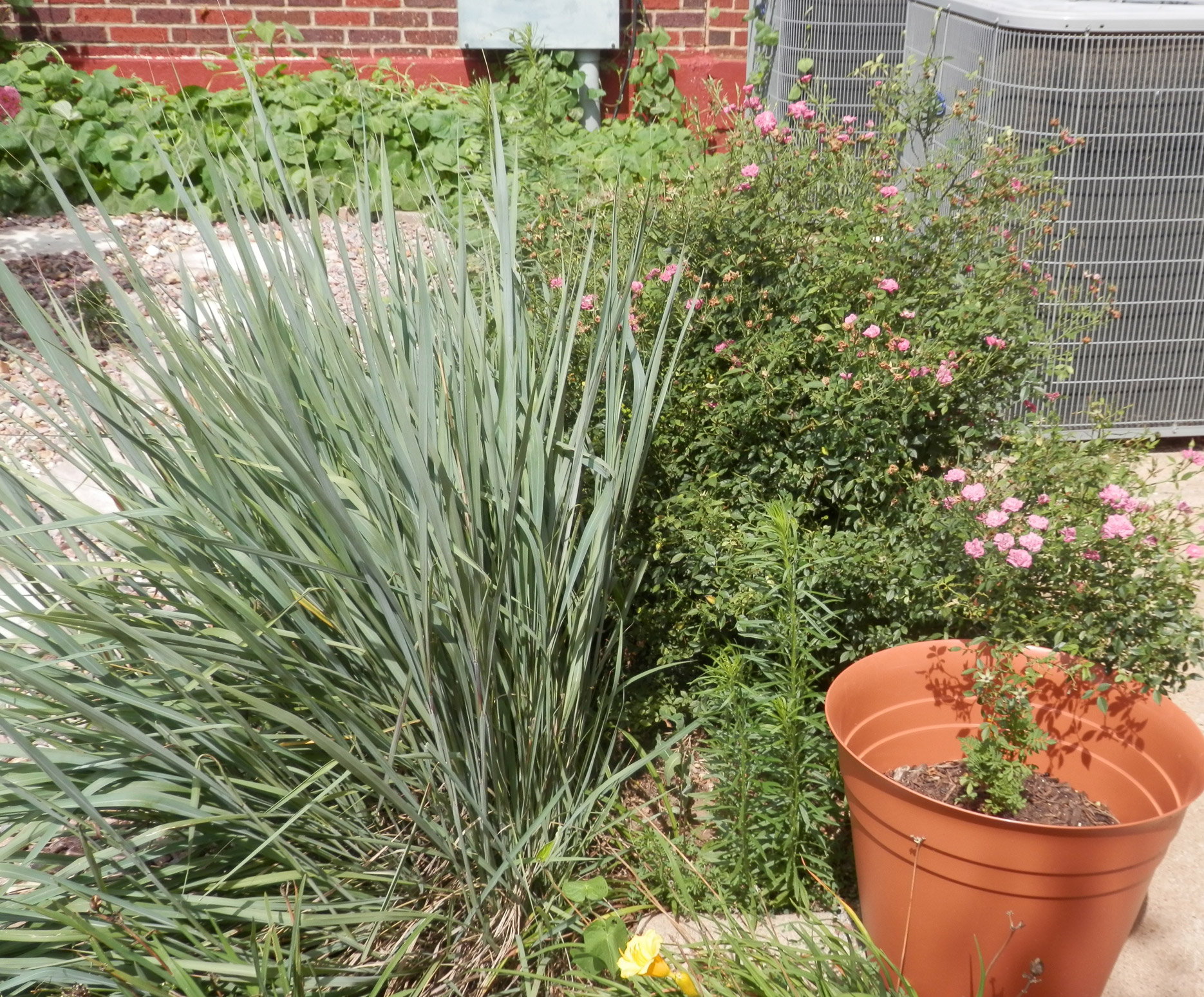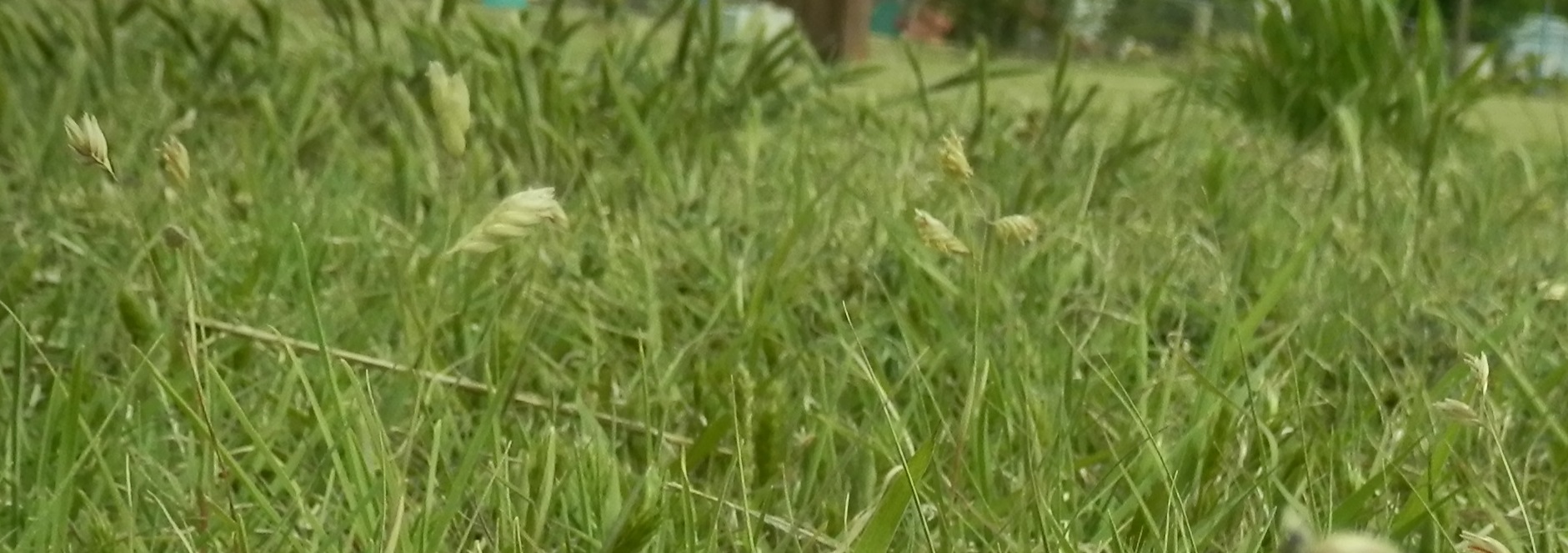The Grasses
It was the grass they came for, and the land that sustained it. Grass for grazing and land for planting. Bluestem and sideoats grama, Indian grass and prairie dropseed-the prairie waved with grass. Today cattle still graze on bluestem and other wild grasses as well as the cultivated bermuda and in the wheat pastures. The buffalo grass has been plowed under and on each mile section, wheat and canola blanket the land.
But along the fences and beside the road, the grass still grows.
Big Bluestem
Andropogon furcatus is the tallgrass of the tallgrass prairie, reaching heights of 3-8 feet, and providing nutrient-rich grazing for native and domesticated herd animals. Native to North America, its natural range has been much reduced by farming, but Oklahoma has a remnant of the unplowed territory at the Tallgrass Prairie Preserve in Pawhuska.
The small clump of bluestem growing in the Territorial Garden was grown from seed provided by Donald Edward Russell, who still grazes cattle on tallgrass.


Buffalo Grass
The shortgrass of the shortgrass prairie, Buchloe dactyloides is the impenetrable turf cut to build the sod houses of the territory. The Sod House Museum at nearby Aline, preserves one of these buffalo grass soddies.
The Territorial Garden is fortunate to have buffalo grass growing in its lawn and in the field adjacent to the garden. This long-time native that has been living on the prairie for over 7 million years requires no mowing, though mowing creates a tighter sod, and is a welcome low maintenance host for the other garden grasses with more aggressive and pugnacious natures.
Wild Barley Grass
It comes, it goes, but mostly, we wish it would go. A nuisance grass, Hordeum leporinum, or wild barley is a native low-growing annual with an abundance of seed that infests neat buffalograss fields with wild hairy spikes. It dies as the weather warms, but it comes back in greater numbers each year.
In the Territorial Garden, eradication is by hand.

